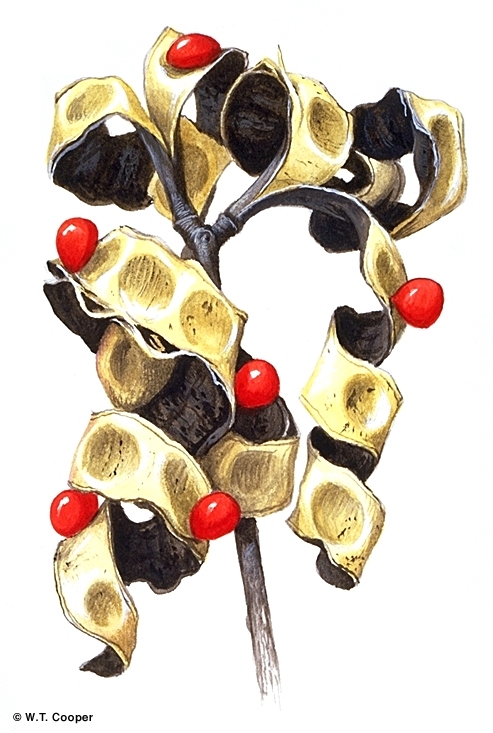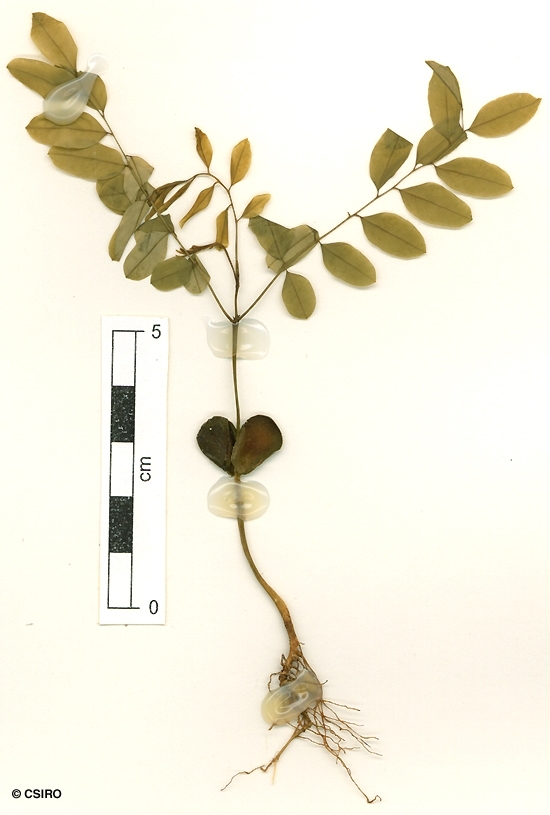Australian Tropical Rainforest Plants - Online edition
Adenanthera pavonina L.







Linnaeus, C. von (1753) Species Plantarum 2: 384. Type: Habitat in India.
Red Beantree; Circassan Tree; Zumbic Tree; Sandalwood, Red; Sandalwood, False Red; Sandal Beadtree; Red Bead Tree; False Red Sandalwood; False Jequirity; Coralwood; Circassian Tree; Barricarri; Bead Tree; Red Sandalwood
Deciduous; leafless for a period in July or August. Blaze odour resembling that of beans (Phaseolus vulgaris).
Leaflet blades about 2-5 x 0.7-2.5 cm, leaflet stalks short, about 0.1-0.2 cm. Compound leaf axis channelled on the upper surface.
Pods about 22 x 1.6 cm. Seeds quite hard. Testa shiny red.
Cotyledons erect, fleshy, obovate, about 10-12 x 8-9 mm. At the tenth leaf stage: leaflet blades elliptic, apex mucronate, base oblique or obtuse; stipules very small, visible only with a lens. A number of very small red glands visible on very young growth at all stages. Seed germination time 11 to 24 days.
Occurs in NT, CYP and NEQ. Altitudinal range from sea level to 200 m. Grows in and on the margins of well developed lowland rain forest and gallery forest. Also occurs in Asia, Malesia and New Caledonia.
Raw seeds are an intoxicant. (Austin, D. F. 1998. Poisonous Plants of Southern Florida).
This species has been used medicinally in India. Cribb (1981).





